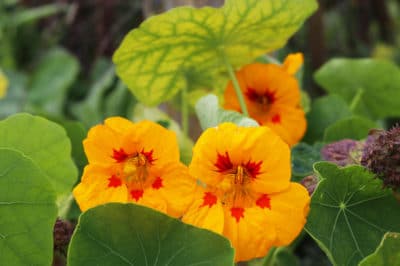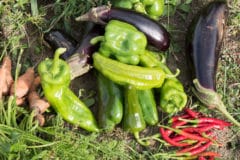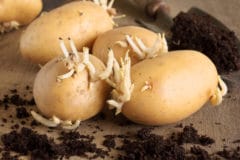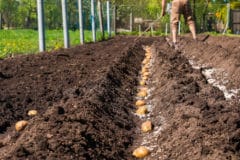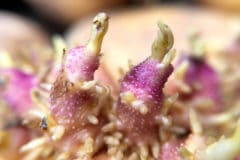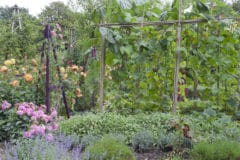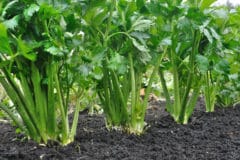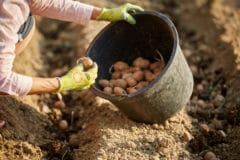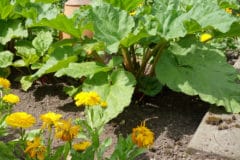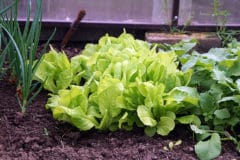About Companion Planting
Mono-cropping – planting all one kind of plant – has some efficiencies, but many gardeners swear by companion planting even though it increases complexity. Companion plants might offer protection from insects or attract beneficial predators. Legumes enrich the soil. Combining deep and shallow-rooted vegetables allows for maximum use of space. When plants have similar water and nutritional needs, grouping them together makes sense.
When Companions Cause Trouble
It’s just as important to know what not to plant as what to plant. Sometimes when plants grow next to each other, root exudates from one affect the taste of the second. Aggressive plants may crowd out less robust plants. A plant might lure a destructive insect to its neighbors. Both plants might be susceptible to the same diseases, increasing the risk that the condition will spread.
Potato Characteristics that Affect Companion Choices
Choosing companions means paying attention to all aspects of the plant. For example:
- Potatoes are deep-rooted; mix them with shallow-rooted plants.
- Potatoes need full sun; don’t plant with tall plants that shade them.
- Potatoes need rich, fertile soil; don’t mix with plants that will overgrow.
- Potatoes need plenty of water while growing but you must stop watering when tops die down. Choose something you harvest before watering stops.
Vegetables and Fruits
Shallow-rooted vegetables like lettuce, scallions, spinach and radishes make good potato companions. Beans and peas add nitrogen to the soil. Cabbage and corn are also good choices but make sure the corn doesn’t shade the potato plants. However, you should avoid other nightshades like tomatoes and eggplants. Raspberries, cucumbers, squash, fennel, onions and turnips can increase disease risks or stunt growth.
Herbs and Potatoes
Herbs are often good choices for attracting beneficial insects or the predators that prey on insect pests. Basil, chamomile, parsley, thyme and yarrow are all good choices to interplant with potatoes. Colorado potato beetles may be repelled by coriander, catnip and tansy. Horseradish is thought to help make potatoes more resistant to disease.
Flowers to Interplant with Potatoes
Beneficial insects often appreciate flowers to feed on or to lay their eggs. When it comes to potatoes, petunias and alyssum are good choices for this purpose. Nasturtiums also do well with potatoes. Marigolds have long been used to repel soil-dwelling nematodes – they are most effective if grown in an area the year prior to planting. Sunflowers may increase the risk of potato blight.
